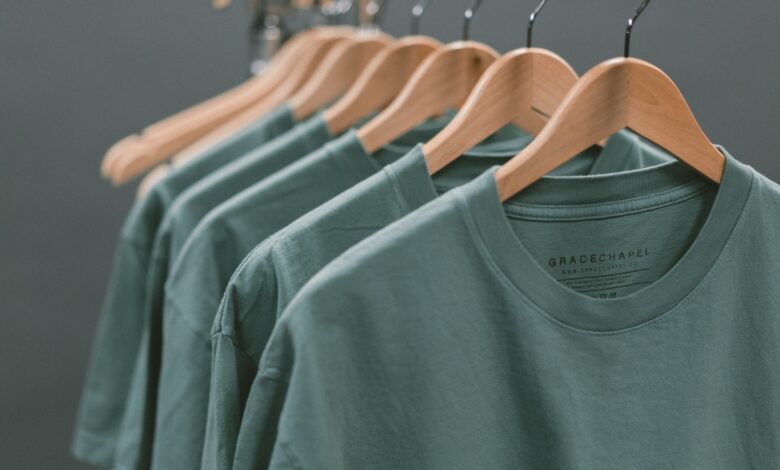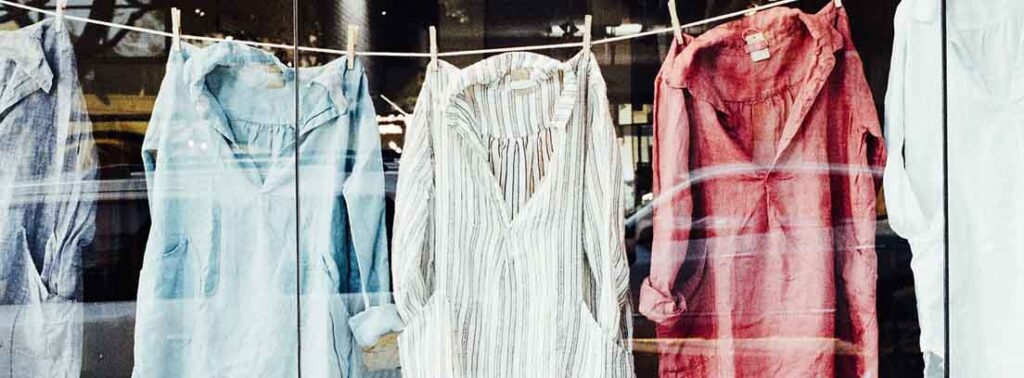
In this article by Stylish.ae, we explore the intriguing topic of color fading and its causes, concerns, and potential solutions. Whether it’s the vibrant hues of your clothes or the fading shades of your furniture, color fading is a common issue that many of us encounter. With a friendly and informative tone, we will delve into the underlying factors that contribute to color fading, highlight the concerns it brings, and provide some helpful tips and tricks to correct and prevent this fading phenomenon. So sit back, grab a cup of tea, and let us guide you through the world of color fading.

Causes of Color Fading
Exposure to sunlight
Exposure to sunlight is one of the main causes of color fading in garments. The ultraviolet (UV) rays from the sun break down the pigments in the fabric, causing them to lose their vibrancy over time. Natural and synthetic dyes are particularly susceptible to fading when exposed to sunlight for extended periods. Darker colors, such as blacks and blues, tend to fade faster than lighter shades. To prevent sunlight fading, it is advisable to limit the exposure of your garments to direct sunlight and to store them in a cool, dark place when not in use.

Contact with chemicals
Another common cause of color fading is contact with chemicals. Bleaching agents found in detergents, chlorine in swimming pools, and acids and alkalis in cleaning products can all strip away the color from fabrics. When washing your garments, it is important to use color-safe detergents and avoid chlorine bleach. Additionally, take care when using cleaning products and be mindful of any potential contact with your clothing to minimize chemical-induced fading.
Repeated washing
The process of washing itself can contribute to color fading. Agitation and heat caused by washing machines and dryers can have a negative impact on dyes, causing them to fade more quickly. Harsh detergents can also be damaging to the fabric and lead to color loss. To minimize color fading from repeated washing, it is recommended to wash your garments on a gentle cycle using cold water and mild detergents. If possible, air drying or using a low heat setting on your dryer can help preserve the color for longer.
Friction and abrasion
Friction and abrasion are often overlooked causes of color fading. Rubbing against rough surfaces, such as furniture or other clothing items, can slowly wear away the color from your garments. The repeated friction that occurs during wearing and washing cycles can also contribute to color loss over time. To reduce frictional color fading, it is advisable to be cautious of the surfaces you come into contact with while wearing your clothes and to avoid extensive rubbing or scrubbing during the washing process.
Poor fabric quality
Lastly, poor fabric quality can play a significant role in color fading. Fabrics with low colorfastness, meaning their ability to retain color, are more prone to fading. It is important to choose high-quality materials that have been dyed or treated to ensure longer color retention. When purchasing garments, consider checking the fabric’s colorfastness rating if available, or opt for trusted brands that prioritize quality in their products.
Concerns Related to Color Fading
Loss of vibrancy and appearance
Color fading can result in a loss of vibrancy and overall aesthetic appeal of garments. Once vibrant colors can become dull and faded, affecting the overall appearance of the clothing. This can be particularly concerning if you have invested in high-quality or designer items that are intended to stand out and make a statement. To maintain the vibrancy of your clothes, it is important to be aware of the causes of color fading and take preventive measures to minimize its effects.

Reduced lifespan of garments
Color fading can significantly reduce the lifespan of your garments. As the colors fade, the garment may no longer look as appealing or stylish, leading to a decreased desire to wear it. This can result in a premature end to the garment’s lifecycle, requiring you to replace it sooner than anticipated. By taking steps to prevent color fading, you can extend the lifespan of your clothing and get more wear out of each piece.
Negative impact on brand image
Color fading can also have a negative impact on brands, especially those that are known for their vibrant and colorful designs. If customers consistently experience color fading with a particular brand’s products, it can damage the brand’s reputation and lead to a loss of trust and loyalty from customers. To maintain a positive brand image, it is crucial for clothing brands to prioritize colorfastness and educate their customers on proper care and maintenance to minimize color fading.
Increased cost of replacement
Replacing faded garments can be costly, especially if they are high-quality or designer items. Color fading may require you to invest in new clothing sooner than expected, leading to increased expenses. By taking preventive measures and implementing corrective options when necessary, you can reduce the need for frequent garment replacement and save on purchasing new clothes.
Effects of Sunlight Exposure on Color Fading
UV rays breaking down pigments
Sunlight contains UV rays that have the ability to break down the pigments in fabric dyes, leading to color fading. These rays penetrate the fabric and interact with the dye molecules, causing them to degrade over time. The longer the exposure to sunlight, the greater the damage to the pigments and the faster the color fading occurs. Darker colors are particularly vulnerable to this process, as they absorb more sunlight and heat. To protect your garments from sunlight fading, consider storing them in a cool, dark place when not in use, and avoid exposing them to direct sunlight for extended periods.
Fading of natural and synthetic dyes
Both natural and synthetic dyes are susceptible to fading when exposed to sunlight. Natural dyes, derived from plants or animals, can be particularly sensitive to UV rays and may fade more quickly compared to synthetic dyes. This is due to the presence of light-sensitive compounds in natural dyes. Synthetic dyes, although more resistant to fading than natural dyes, can still lose their color over time when exposed to prolonged sunlight. Preventive measures such as using UV-protective sprays or treating garments with color-boosting products can help slow down the fading process.
Higher vulnerability of certain colors
Certain colors are more vulnerable to fading than others. Generally, darker colors such as blacks, blues, and purples are at a higher risk of fading compared to lighter shades. This is because dark colors absorb more sunlight and heat, leading to a faster degradation of the pigments. Bright and bold colors, such as reds and yellows, may also be more prone to fading due to the nature of the dyes used to achieve these vivid shades. When selecting garments, it is essential to consider the color choices and be aware of the potential fading risks associated with darker and brighter hues.
Preventive measures against sunlight fading
To protect your garments from sunlight fading, there are several preventive measures you can take. Firstly, limit the exposure of your garments to direct sunlight by wearing protective clothing, such as hats or lightweight long sleeves, when spending time outdoors. If possible, seek shade during peak sunlight hours. Additionally, consider using UV-protective sprays or applying color-boosting products that can help reduce the harmful effects of sunlight on the fabric dyes. Finally, when storing your garments, select a cool, dark place away from windows or direct sunlight to minimize any potential damage from sunlight exposure.
Chemical Factors Contributing to Color Fading
Bleaching agents in detergents
Many conventional detergents contain bleaching agents that can contribute to color fading. These agents, such as chlorine bleach or optical brighteners, work by breaking down the fabric’s dye molecules, resulting in a loss of color. To minimize chemical-induced fading, it is important to opt for color-safe detergents that do not contain these bleaching agents. Look for detergents specifically designed for colored garments or those labeled as “dye-free” or “color-safe.”
Chlorine in swimming pools
Swimming pools often contain chlorine, which can be damaging to both the fabric and the color of your swimwear. Chlorine has bleaching properties that can strip away the dye molecules, leading to color fading. To protect your swimwear from chlorine-induced fading, it is recommended to rinse your swimsuit immediately after swimming to wash away any residual chlorine. Additionally, consider using chlorine-removing products or opting for swimwear specifically designed to withstand chlorine exposure.
Acids and alkalis in cleaning products
Cleaning products, such as stain removers or spot treatments, may contain acids or alkalis that can cause color fading. These chemicals can react with the fabric dyes and break down their color molecules. To avoid chemical-induced fading, it is advisable to read the labels of cleaning products carefully and opt for gentle, pH-neutral options whenever possible. Always test any cleaning products on a small, inconspicuous area of the garment before applying them to the entire fabric.
Tips for minimizing chemical-induced fading
To minimize color fading caused by chemicals, there are several tips you can follow. Firstly, always read and follow the care instructions on your garments, as they often provide guidelines for proper washing and usage. Use color-safe detergents that are specifically formulated to protect the color of your garments. Avoid using chlorine bleach or harsh cleaning products and opt for gentle, pH-neutral alternatives. If using stain removers or spot treatments, test them on a small, hidden area of the fabric before applying them to the entire garment to ensure they do not cause color fading.
Impact of Repeated Washing on Color Fading
Agitation and heat effects on dyes
The process of washing garments can contribute to color fading. Agitation inside the washing machine, coupled with the heat generated during the washing and drying cycles, can have a negative impact on the fabric dyes, causing them to fade more quickly. To minimize color fading from repeated washing, it is recommended to wash your garments on a gentle or delicate cycle. Use cold water instead of hot water, as higher temperatures can accelerate the fading process. Similarly, choose a low heat setting or opt for air drying whenever possible to reduce the exposure to heat.

Damage caused by harsh detergent
Using harsh detergents can also contribute to color fading. Harsh detergents can strip away the fabric’s dye molecules, leading to a loss of color over time. To preserve the color of your garments, it is advisable to use mild detergents specifically formulated for colored fabrics. These detergents are designed to be gentle on the dyes and help maintain their vibrancy. Additionally, using a smaller amount of detergent than recommended can help prevent excessive chemical exposure and reduce the risk of color fading.
Proper washing techniques to preserve color
To preserve the color of your garments during washing, there are several techniques you can employ. Firstly, sort your laundry by color to avoid dye transfer between garments. Wash similar colors together to prevent any color bleeding. Use a gentle or delicate cycle on your washing machine, and opt for cold water instead of hot water. Cold water is less likely to cause color fading compared to higher temperatures. Finally, avoid overcrowding the washing machine to ensure proper water circulation and minimize unnecessary friction between garments.
Friction and Abrasion: Culprits of Color Fading
Rubbing against rough surfaces
Friction and abrasion from rubbing against rough surfaces can gradually wear away the color from your garments. This can occur during everyday activities such as sitting on rough furniture, leaning against walls, or carrying bags that continuously rub against your clothing. Over time, the constant friction can cause the dye molecules to break down, resulting in color fading. To reduce frictional color fading, it is important to be cautious of the surfaces you come into contact with while wearing your clothes. Avoid rubbing or brushing against rough surfaces whenever possible.
Wearing and washing cycles correlation
The wearing and washing cycles of your garments are closely correlated when it comes to color fading. The repeated friction that occurs during wearing, combined with the agitation and heat generated during washing, can accelerate the color fading process. The more frequently a garment is worn and washed, the greater the chances of color fading. To minimize the impact of wearing and washing cycles on color fading, consider rotating your wardrobe to allow garments to rest between wears. This will reduce the frequency of washing and help extend the lifespan of your clothing.
Protective measures for reducing frictional color fading
To protect your garments from frictional color fading, there are several measures you can take. Firstly, be conscious of the surfaces you come into contact with while wearing your clothes and try to avoid rubbing or brushing against rough surfaces whenever possible. Consider using garment bags or protective covers when carrying bags or backpacks to minimize direct friction with your clothing. Additionally, when washing your garments, turn them inside out to reduce friction during machine agitation. These simple protective measures can help preserve the color of your garments and prolong their lifespan.
The Role of Poor Fabric Quality in Color Fading
Low colorfastness due to subpar fabric
Poor fabric quality is a significant factor in color fading. Fabrics with low colorfastness, meaning their ability to retain color, are more susceptible to fading. Subpar fabrics may not be adequately dyed or treated to withstand the washing and wearing cycles, resulting in color loss over time. To ensure longer color retention, it is important to choose garments made from high-quality fabrics that have been properly dyed or treated to enhance their colorfastness. Investing in garments from reputable brands or manufacturers known for their quality can help minimize color fading due to poor fabric quality.
Choosing high-quality materials for longer color retention
To counteract the effects of poor fabric quality, it is crucial to select garments made from high-quality materials. High-quality fabrics are typically made using better dyeing techniques and treatments that enhance their colorfastness. Fabrics such as cotton, silk, and rayon are commonly known for their ability to hold color well. When purchasing garments, consider checking the fabric composition and opt for natural fibers or high-quality synthetics that have a good track record for color retention.
Determining fabric colorfastness
To determine the colorfastness of a fabric before purchasing, there are a few indicators to look for. Firstly, check if the fabric has been labeled as colorfast or color-safe by the manufacturer or brand. This indicates that the fabric has undergone treatments to enhance its color retention. Additionally, you can perform a simple colorfastness test at home by dampening a small, inconspicuous area of the fabric and pressing a white cloth against it. If any color transfers onto the white cloth, it is an indication of poor colorfastness, and the fabric may be more prone to color fading.
Measures to Correct Color Fading
Fabric dyeing and coloring techniques
If you notice significant color fading in your garments, one option for correction is fabric dyeing or coloring techniques. Fabric dyeing involves immersing the garment in a dye bath to add new color or refresh the existing color. There are various dyeing techniques available, including hand dyeing, machine dyeing, or professional dyeing services. Coloring techniques, such as fabric markers or fabric paint, can also be used to restore faded areas or add new color accents. However, it is important to note that fabric dyeing and coloring should be done carefully and following the specific instructions provided by the dye or coloring product.
Color restoration through professional treatment
For more severe cases of color fading or if you want a professional touch, color restoration through professional treatment may be a viable option. Professional textile treatment services or dry cleaners specializing in color restoration can assess your garments and apply appropriate techniques to restore the color. These services may involve color-matching and custom fabric dyeing to ensure a seamless restoration. Professional treatment can be particularly beneficial for valuable or sentimental items that require expert care.
Application of color-boosting products
Color-boosting products can also be used to correct color fading. These products, such as color revivers or fabric color restorers, work by depositing pigments onto the fabric to restore or enhance the existing color. They are typically available in the form of sprays, liquids, or pens and can be applied directly to the faded areas. However, it is important to note that color-boosting products may not provide permanent results and may require periodic reapplication to maintain the restored color.
Tips for home color restoration
If you prefer to tackle color restoration at home, there are several tips you can follow. Firstly, it is important to match the color accurately to avoid creating noticeable color discrepancies. Test the color restoration product on a small, inconspicuous area of the fabric before applying it to the entire garment to ensure compatibility and desired results. Follow the instructions provided with the color restoration product carefully, including any recommended washing or drying procedures. It is also advisable to wash the garment separately after color restoration to prevent any color bleeding onto other items.
Preventive Measures to Preserve Color
Proper garment care and washing instructions
Proper garment care and following the recommended washing instructions are essential preventive measures to preserve color. Each garment comes with specific care instructions that outline the best practices for washing, drying, and storing. It is important to read and follow these instructions carefully to minimize color fading and maintain garment integrity. When in doubt, opt for gentle washing settings, cold water, and mild detergents to protect the color and fabric of your garments.
Use of color-safe detergents and additives
Using color-safe detergents and additives is another preventive measure that can help preserve color. Color-safe detergents are specifically formulated to protect the color of your clothes and minimize color fading. They are milder compared to conventional detergents and do not contain harsh bleaching agents. Additionally, color-safe additives, such as color-protecting laundry boosters or color-safe bleach alternatives, can be used to enhance the color retention of your garments. These additives work by providing extra protection to the fabric dyes during the washing process.
Avoiding excessive exposure to sunlight
As previously discussed, excessive exposure to sunlight is a major cause of color fading. To prevent sunlight fading, it is advisable to limit the exposure of your garments to direct sunlight as much as possible. When drying your clothes outdoors, choose shaded areas or use a clothesline that offers protection from direct sunlight. Additionally, when storing your garments, opt for a cool, dark place away from windows or any sources of direct sunlight to minimize potential damage.
Considering fabric colorfastness before purchasing
To proactively prevent color fading, consider the fabric’s colorfastness before purchasing a garment. High-quality fabrics with good colorfastness ratings are less likely to fade quickly compared to low-quality or poorly dyed fabrics. Check the garment labels or product descriptions for any information regarding colorfastness or dye treatments. If no specific information is available, it is advisable to opt for reputable brands or manufacturers known for their quality and attention to color retention.
Concluding Thoughts on Color Fading
Understanding the causes and effects of color fading is key to implementing effective preventive measures and corrections. By being aware of the various factors that contribute to color fading, such as sunlight exposure, chemicals, repeated washing, friction, and poor fabric quality, you can take steps to minimize their impact on your garments. From selecting high-quality materials to following proper care instructions and utilizing color-safe products, there are numerous preventive measures that can help prolong the vibrancy and lifespan of your clothing. In cases where color fading has already occurred, fabric dyeing, professional treatment, color-boosting products, and home color restoration techniques can be employed to restore or enhance the color. By prioritizing the maintenance of vibrant and long-lasting colors, you can ensure that your wardrobe remains visually appealing and enjoyable to wear for years to come.




